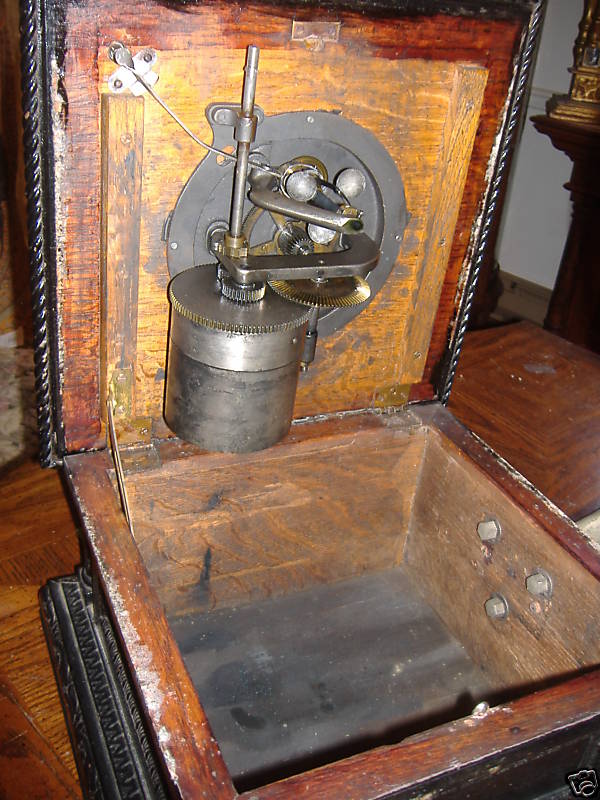I think looking under the lid eliminates the possibility of it being original, and perhaps has more than one coat of "finish" over the original.JohnM wrote:Actually, one can see the grain in an ebonized finish. An ebonized finish is different from a French Polish on an ebony piano, for example.
An ebonized finish is simply a black stain. This was popular particularly on walnut furniture in the last three decades of the 1800's and lingered into the early 20th C. I think this finish may be original on the Victor D. Never say never in this hobby . . . surely you all are familiar with Lynn Bilton's mahogany Monarch?!
John M.

You can see unfinished wood on the inside of the case. You then can see the original finish in the area directly around the motor. Then there is the first non-original finish on the lip of the case, and the outer edge of the motorboard, and then the ebonized finish on the outside. I can't imagine the victor company would have just done the very exterior of the machine in that finish, and then have put that over a coat of shellac, and whatever the second finish actually is. I could be wrong, but it just doesn't look up to the quality I'd expect for a Victor.
![[The Talking Machine Forum - For All Antique Phonographs & Recordings]](/styles/we_universal/theme/images/the_talking_machine_forum.png)
